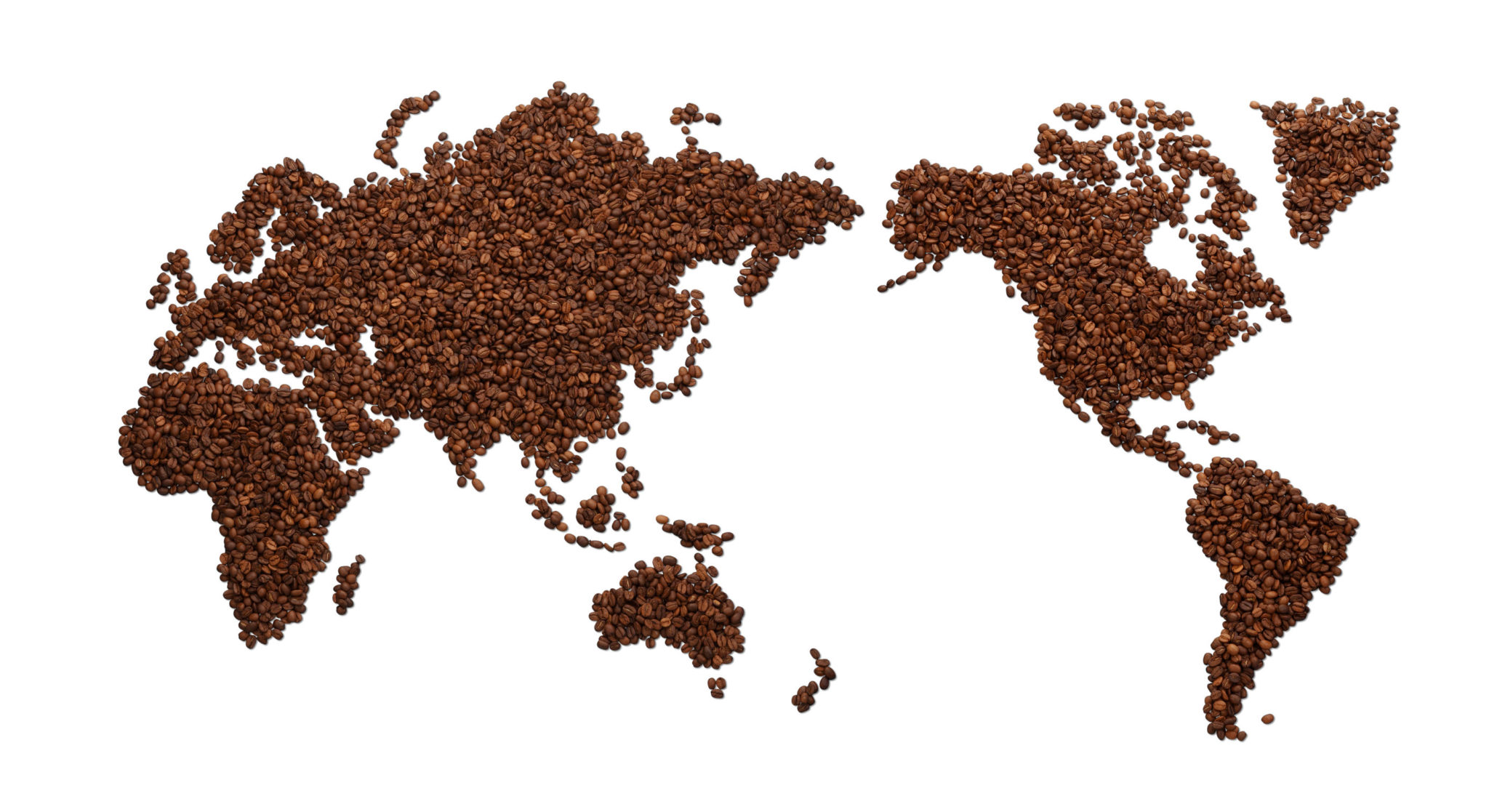“The Bean Belt” or “Coffee Belt” describes the equatorial zone that fosters ideal coffee-growing conditions. This area is officially measured at latitudes of 25 degrees North, and 30 degrees South. Robusta coffee is able to grow in much higher temperatures and on flatter ground, whereas the Arabica trees require high altitudes, rich soil, and a more temperate climate.
Geographical location plays an enormous role in determining the flavor profile that ends up in your cup. Variable components of agriculture cause different beans from various regions to carry distinct tastes. These components include soil chemistry, climate, plant variety, and altitude. Combined with post-pick processing differences from region to region, experienced coffee drinkers are able to identify where their coffee originated by the flavors inside of their cup.
Coffee Map
Coffee is grown in over 50 countries worldwide. The key regions include North America & the Caribbean, South America, East Africa, West Africa, the Arabian Peninsula, and Asia. Each region will leave a distinct stamp on the product produced.
* Roll over the map to view more details about each growing region.

West Africa
Ivory Coast To the West, we find one of the world's leading producers of Robusta coffee, the Ivory Coast. These coffees are low in both body and acidity but do contain about 50% more caffeine than Arabicas. For this reason, these Robustas are often used in dark roasts and espresso blends. In addition to the kick of caffeine that espresso drinkers expect, Robusta is also a common trick used in Italian kitchens because it naturally features a visible crema when present in an espresso blend.
East Africa
Ethiopia and Kenya encompass the areas of cultivation for coffee in East Africa.
The Arabian Peninsula
While Ethiopia remains the home of coffee, Yemen was the first country to commercially cultivate the product. Even today, coffee trees are still grown using practices that are centuries old. The terraced, family-owned farms that cultivate this product are so small they are referred to as gardens. Beans grown in this region tend to be smaller due to the scarcity of rainfall. Also, experts believe this to be the reason Yemeni coffee carries such a rich, deep, and identifiable taste.
North America and the Caribbean
Hawaii: Hawaii is famous for high-quality coffee, Kona. Mexico: Down in Mexico, Altura, which directly translates to height, is the name given to coffee grown at higher altitudes. Puerto Rico: Two major growing regions, Yauco Selecto and Grand Lares, have once again been exporting a high-quality Arabica that features a fruity aroma, alongside a well-balanced combination of body and acidity.
South America
Colombia & Brazil are the two featured sub-regions of South America in regards to coffee production. Colombia: There are two grades of Colombian Arabicas: Supremo & Excelso. Excelso has more acidity, but softer body throughout the rest of the coffee. Supremo is the highest quality cup available from Colombia, as it boasts a natural aromatic sweetness and well-balanced acidity. Brazil: Known for its naturally nutty flavors, Brazilian coffee is also lightly acidic, medium-bodied, and sweet.
Asia
Indonesia and Vietnam are two areas of Asia well-known for their coffee production. Indonesia: Featuring mild acidity and a rich, full body, these coffees are grown among farms about 1 to 2 acres in size. Vietnam: These coffees are often used in low-doses of blends to provide and slightly earthy taste.




